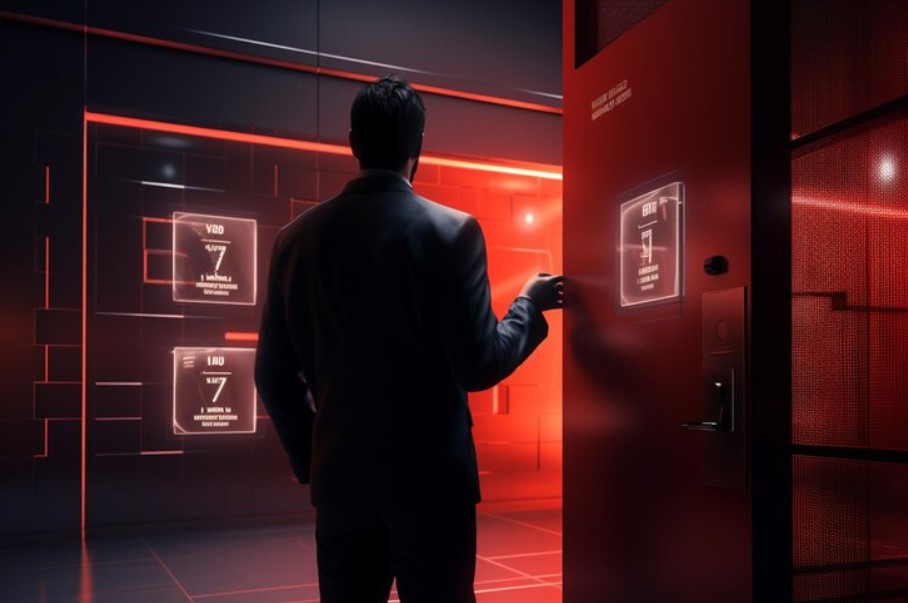Securing homes has become crucial with the rise of advanced technologies. Among the top options are face recognition door access and fingerprint-recognition systems. Consequently, these modern technologies promise enhanced security and convenience, making them popular choices.
However, each has its strengths and weaknesses, which can influence your decision. Therefore, this blog aims to compare face recognition and fingerprint recognition, examining their features, benefits, and drawbacks.
By understanding these aspects, you can thus make an informed choice about which technology is best suited for your door security needs.
Understanding Face Recognition
Face recognition technology identifies and verifies a person by analyzing their facial features. Specifically, it uses cameras and software to capture an image of your face. Subsequently, the system matches this image against a database of stored images.
How Face Recognition Works
-
The camera captures your face.
-
The software analyzes facial features like the distance between the eyes, nose, and mouth.
-
The system compares this data with stored images to find a match.
Advantages of Face Recognition
-
Hands-free Access: You don’t need to touch anything. Just look at the camera, and the door unlocks.
-
High Convenience: It works quickly and efficiently. You don’t need to carry keys or remember codes.
Disadvantages of Face Recognition
-
High Cost: Installing a face recognition system can be expensive. The technology itself and the setup cost more than traditional locks.
-
Privacy Concerns: Some people worry about how their facial data is stored and used. There is a risk of data misuse.
-
Accuracy Issues: Face recognition can struggle in low light or with changes in your appearance. If you wear glasses or grow a beard, it might not work as well.
Understanding Fingerprint Recognition
Fingerprint recognition technology identifies you by analyzing your fingerprint. Specifically, it uses a scanner to capture the unique patterns on your finger. Consequently, the system then matches this fingerprint with stored data.
How Fingerprint Recognition Works
-
You place your finger on a scanner.
-
The scanner captures the unique ridges and valleys of your fingerprint.
-
The system compares this data with stored fingerprints to find a match.
Advantages of Fingerprint Recognition
-
High Accuracy: Fingerprint recognition is highly accurate. Each fingerprint is unique, making it a reliable security measure.
-
Cost-Effective: Fingerprint systems are usually cheaper than face recognition systems. They offer a good balance of security and affordability.
-
Widely Used and Trusted: Many people are familiar with fingerprint recognition. It is used in smartphones, offices, and banks.
Disadvantages of Fingerprint Recognition
-
Requires Physical Contact: You need to touch the scanner for it to work. This can be less convenient than hands-free systems.
-
Affected by Dirty or Damaged Fingers: Dirt, grease, or injuries can affect the scanner’s ability to read your fingerprint. This can be a problem in some situations.
Security Comparison
When it comes to security, both technologies offer high levels of protection. However, each has its strengths and weaknesses.
Reliability and Accuracy
-
Face Recognition: Highly reliable and in good condition. However, it can struggle with poor lighting or changes in appearance.
-
Fingerprint Recognition: Very accurate and reliable. It is less likely to be fooled by changes in your appearance.
Vulnerability to Hacking or Spoofing
-
Face Recognition: Advanced systems use anti-spoofing techniques to prevent unauthorized access. However, basic systems might be vulnerable to photo or video attacks.
-
Fingerprint Recognition: Harder to hack. It is more difficult to replicate someone’s fingerprint accurately.
Ease of Use and User Experience
-
Face Recognition: Offers a smooth, hands-free experience. It is fast and convenient.
-
Fingerprint Recognition: Requires you to touch the scanner. This can be less convenient but is still quick and easy.
Privacy Concerns
When considering door security, privacy is a major concern. Indeed, both face recognition door access and fingerprint recognition systems have specific privacy implications that you should carefully consider.
Face Recognition Privacy Issues
-
Data Storage: Face recognition systems store your facial data. This data could be hacked or misused, leading to privacy breaches.
-
Surveillance: Constant surveillance might feel invasive. You might worry about who has access to your facial data and how it’s used.
-
Legal Implications: Different countries have varying laws regarding facial data. You need to know the legal landscape in your area to understand your rights and obligations.
Fingerprint Recognition Privacy Considerations
-
Data Security: Fingerprint data is also stored digitally. While it’s secure, there is always a risk of data breaches.
-
Less Invasive: Fingerprint recognition feels less invasive than face recognition. You control when and where your fingerprint is scanned.
-
Legal Protection: Fingerprint data laws are more established. This provides clearer guidelines on data protection and usage.
Installation and Maintenance
Installation and maintenance are key factors when choosing a door security system. Each technology has its own requirements. Face recognition vs fingerprint door access can differ significantly in these aspects.
Face Recognition Installation
-
Complex Setup: Face recognition systems need precise installation. Cameras must be placed correctly to capture clear images.
-
Professional Help: Installation usually requires professional help. This adds to the overall cost.
-
Integration: These systems can integrate with other smart home devices. This provides a comprehensive security solution.
Fingerprint Recognition Installation
-
Simple Setup: Fingerprint systems are easier to install. Many can be set up without professional help.
-
User-Friendly: Installation guides are straightforward. This makes it easy for anyone to install.
-
Compatibility: These systems can also integrate with other security devices. This enhances overall security.
Maintenance Requirements
-
Face Recognition: Requires regular updates to improve accuracy. Cleaning the camera lens is essential to maintain clear images.
-
Fingerprint Recognition: Needs occasional cleaning of the scanner. Regular updates ensure the system runs smoothly.
-
Cost Considerations: Maintenance costs for both systems are usually low. However, regular updates are necessary to keep them secure.
Cost Analysis
When choosing between face recognition and fingerprint recognition, cost is a significant factor. Both have different initial and long-term costs.
Initial Costs
-
Face Recognition: Higher initial costs due to advanced technology. Professional installation adds to the cost.
-
Fingerprint Recognition: Lower initial costs. Many systems are affordable and easy to install.
Long-Term Costs
-
Face Recognition: Ongoing costs include software updates and occasional maintenance. High-quality systems may last longer, reducing replacement costs.
-
Fingerprint Recognition: Lower ongoing costs. Maintenance is simple and inexpensive. Systems are durable and reliable.




